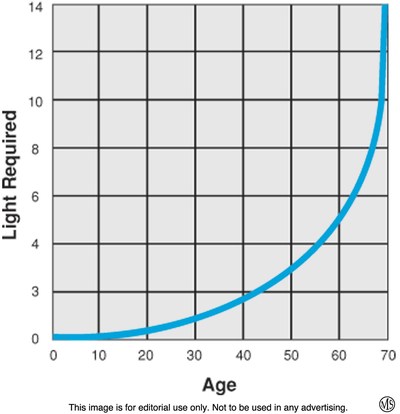National Car Care Month: 3 ways aging drivers can see better at night
NEW YORK, March 29, 2017 /PRNewswire/ -- MS -- Many drivers are less comfortable driving at night than during the daytime. Studies have shown that approximately 65 percent of accidents occur at night. Many of those accidents can be traced to inadequate lighting. Visual acuity, which is directly related to the amount of light provided by the environment, can be diminished by as much as 70 percent at night.
The human eye is not adapted for nocturnal vision, so when driving at night, drivers often experience a loss of depth perception and difficulty distinguishing between colors as contrasts fade away.
This is especially problematic for aging drivers. As drivers age, the lenses of their eyes become more opaque, reducing the amount of light their eyes can receive. For example, at age 40, the average driver may already need twice as much light than a driver at age 20. At age 65, that need can climb to a whopping eight to 10 times more light (see graph).
But aging drivers need not sacrifice their nocturnal independence just to stay safe behind the wheel. The following are three ways aging motorists can improve their nighttime visibility.
1. Upgrade headlights.
According to a recent study from the automotive club AAA, the halogen headlights found in more than 80 percent of vehicles on the road today fail to safely illuminate unlit roadways. Upgraded headlight bulbs are designed to put more light on the road, helping to combat the natural deterioration of vision that so many aging drivers deal with on a daily basis. Philips Upgrade Headlight Bulbs can deliver up to 100 percent more light on the road than standard halogen bulbs, greatly improving nighttime visibility. Unlike major vehicle safety systems, such as air bags, three-point seat belts and anti-lock braking systems that provide "passive" protection for drivers, Philips lighting promotes "active" safety protection by increasing overall visibility and illumination. This allows drivers to not only see each other better, but also to see further down the road so they can avoid potential hazards.
2. Give fellow drivers more room.
In daylight hours, drivers might feel comfortable giving the vehicles in front of them a certain amount of room. Aging drivers can expand that comfort zone between themselves and fellow drivers at night. This gives drivers more time to react if the drivers in front of them swerve or brake quickly.
3. Maintain headlights.
Often overlooked, headlight maintenance is another way older drivers can counter the effects that aging has on their nocturnal vision. Inspect headlights regularly, checking to make sure that plastic headlight lenses have not turned yellow or foggy. Designed to restore plastic lenses in less than 30 minutes, the Philips Headlight Restoration Kit quickly and effectively combats clouding on headlights as well as taillights, turn signals and reflective lens covers, helping aging drivers see more clearly at night while also making vehicles more visible to other drivers.
More information is available at www.philips.com/automotive.
SOURCE Philips
Related Links
WANT YOUR COMPANY'S NEWS FEATURED ON PRNEWSWIRE.COM?
Newsrooms &
Influencers
Digital Media
Outlets
Journalists
Opted In


Share this article